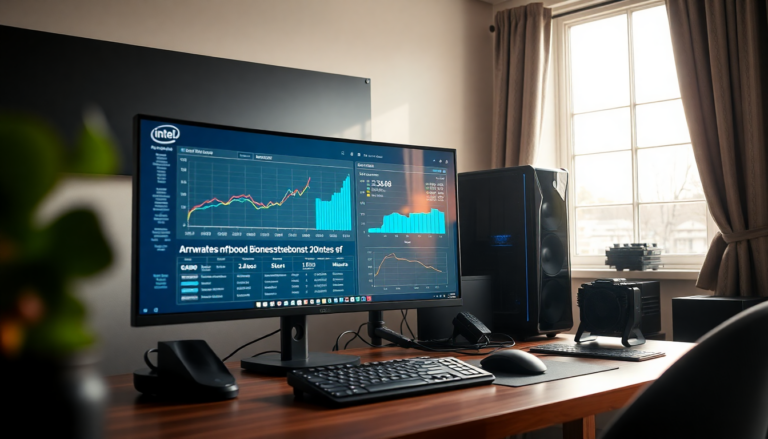Argomenti trattati
Introduction to Intel’s 200S Boost
Intel’s introduction of the 200S Boost feature for its Arrow Lake chips has generated significant buzz in the tech community. However, recent testing reveals that this feature yields minimal performance improvements, particularly on Linux systems. As enthusiasts and gamers seek to maximize their hardware capabilities, understanding the effectiveness of these enhancements becomes crucial.
Performance testing results
According to tests conducted by Phoronix, the results from Intel’s 200S Boost on Linux showed negligible performance gains. The same trend was observed in Windows, where memory overclocking from DDR5-6400 to DDR5-8000 was responsible for most of the performance enhancements across both gaming and productivity applications. This raises questions about the actual benefits of the new boost feature compared to traditional overclocking methods.
Improvements and fixes
In the six months following the launch of the Arrow Lake chips, Intel has rolled out numerous updates aimed at optimizing performance. The initial wave of fixes, delivered via Windows Updates and BIOS updates, addressed significant issues that hindered performance. However, users have noted that despite these updates, improvements remain modest, particularly for those sticking with standard memory configurations.
Understanding the 200S Boost profiles
Intel’s 200S Boost profiles are opt-in BIOS presets that allow users to achieve higher fabric, die-to-die, and memory-transfer speeds compared to stock settings. While these profiles promise enhanced performance, they are dependent on the use of faster memory kits. Users seeking to fully leverage the benefits of 200S Boost should consider investing in DDR5-7200 or DDR5-8000 memory to observe more substantial gains.
Benchmarking against standard setups
In benchmark tests using the Core Ultra 9 285K and the Asus ROG Maximus Z890 Hero, the performance difference between the boost profiles and stock configurations was minimal. The tests conducted on Ubuntu 25.04 with the Linux kernel version 6.14 showed that while gaming performance improved slightly in titles like Counter-Strike 2, other games experienced a drop in frame rates, indicating inconsistency in the results.
Memory speed’s role in performance
The primary factor driving the performance improvements associated with Intel’s 200S Boost is the support for faster memory speeds. In tests where standard DDR5-6400 was used, the gains were so minor that they were barely noticeable. Comparisons in Windows similarly showed only a 0.8% increase in FPS across a geometric mean of 16 games when using the boost profile. This highlights the importance of optimized memory configurations for realizing any potential benefits.
Stability concerns with faster RAM
While Intel’s boost profiles offer users a way to enhance performance, they do not guarantee stability with faster RAM. Users must remain cautious, as these profiles merely provide warranty coverage rather than assurances of reliability. Many users who invest in DDR5-8000 kits often run them at rated speeds using XMP settings, which may bypass the need for Intel’s boost profiles altogether.
The future of Intel’s performance enhancements
As Intel continues to refine its technology and release updates, the potential for improved performance remains. However, users looking for significant gains should focus on upgrading their memory configurations alongside leveraging features like the 200S Boost. By doing so, they can ensure they are getting the most out of their Intel hardware.
Engagement and updates
For tech enthusiasts eager to stay informed about the latest developments in hardware, subscribing to news outlets like Tom’s Hardware can provide valuable insights. By following these sources, readers can keep their finger on the pulse of the rapidly evolving tech landscape, ensuring they are well-equipped to make informed decisions regarding upgrades and purchases.

